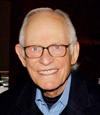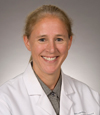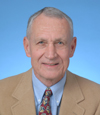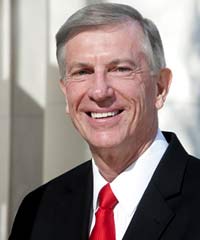Head of UNC System Speaks at University Day
Posted on Sept. 29, 2011
Faculty processional to the University Day festivities. (Photo by Sarah Arneson ’96)
Carolina celebrated its history as the nation’s first public university on University Day, Oct. 12.
The featured speaker, UNC System President Thomas W. Ross ’75 (JD), gave the keynote speech for the convocation, which began at 11 a.m. Classes were canceled from 10 a.m. to 1 p.m. Chancellor Holden Thorp ’86 presided. Ross’ speech is available on YouTube.
University Day marks the laying of the cornerstone of Old East, the nation’s first state university building, in 1793 and the beginning of public higher education in the United States. The campus first celebrated University Day in 1877.
This year marks the 40th anniversary of the 1971 consolidation of North Carolina’s public institutions of higher education under one governing body and president. Ross became the fifth president of the 17-campus UNC System on Jan. 1, 2011, and was inaugurated on Oct. 6 at N.C. A&T State University in Greensboro.
A native of Greensboro, Ross earned a bachelor’s degree in political science from Davidson College in 1972 and graduated with honors from Carolina’s law school in 1975. After a short stint as an assistant professor at the UNC School of Government, Ross joined the Greensboro law firm of Smith Patterson Follin Curtis James & Harkavy. He left the firm in 1982 to serve as chief of staff in the Washington, D.C., office of U.S. Rep. Robin Britt.
The following year, at age 33, he was appointed to be the youngest N.C. Superior Court judge at the time, a position he held for the next 17 years.
In 1999, Ross was appointed director of the state’s Administrative Office of the Courts. Two years later, he became executive director of the Z. Smith Reynolds Foundation, and in 2007 he was named president at Davidson, serving in that role until he became head of the UNC System on Jan. 1.
He has served on the boards of trustees at Davidson and UNC-Greensboro as well as the boards of visitors at Wake Forest University and Carolina. In addition, his honors include distinguished alumni awards from Davidson and UNC’s law school and an honorary doctorate from UNC-Greensboro.
Other University Day convocation highlights included the presentation of Distinguished Alumna and Alumnus Awards, a practice begun by the faculty in 1971 to recognize alumni who have made outstanding contributions to humanity.
This year’s recipients are:
 |
Prize-winning songwriter Alan Bergman ’48 of Beverly Hills, Calif. Bergman and his wife, Marilyn, have collaborated as a songwriting team for the last 50 years. They have won Oscars for The Windmills of Your Mind (1968), The Way We Were (1973) and the score for Yentl (1984). The Bergmans have been inducted into the Songwriters Hall of Fame and have received the Clooney Foundation Singers Salute to the Songwriter Award, the Songwriter’s Guild of America Aggie Award, the Songwriters Hall of Fame Johnny Mercer Award, the Cultural Medal of Honor (Spain) and the National Music Publishers Association Lifetime Achievement Award. They have been awarded honorary degrees by Berklee College of Music and the University of Massachusetts. |
 |
Denise Jean Jamieson ’92 (MPH) of Decatur, Ga. Jamieson is research team leader for unintended pregnancy, STD and HIV intervention at the Centers for Disease Control and Prevention and clinical professor of gynecology and obstetrics at Emory University School of Medicine. She is a national leader in the promotion of women’s reproductive health and has made many contributions to understanding women’s health on issues as varied as ectopic pregnancy, preeclampsia, postpartum depression, emerging infectious diseases, contraception and hysterectomy. She holds degrees from the University of Pennsylvania and Duke in addition to Carolina. |
 |
Frederick Otto Mueller ’61 of Chapel Hill, professor emeritus and former chair of the department of exercise and sport science who also earned his master’s in education degree in 1964 and his doctorate in 1970, both from UNC. Mueller joined the faculty in 1968 and served until retiring in 2009. During his 10 years as chair (1995–2005), Mueller propelled his department to the top of the discipline by his far-sighted faculty hires and astute management. Today, Carolina’s doctoral program in human movement science, a program Mueller helped start in 1997, could fall within the top 10 percent of programs in the nation in National Research Council ratings. His research interest is in the area of the epidemiology of athletic injuries. Even in retirement, he continues to conduct his research, currently serving as the director of the National Center for Catastrophic Sports Injury Research, which is headquartered in Chapel Hill. |
 |
Linda Ellen Oxendine ’67 of Pembroke, the first American Indian woman to receive a bachelor’s degree from Carolina. Oxendine, a member of the Lumbee tribe, served as professor and chair of the American Indian studies department at UNC-Pembroke from 1989 to 2006. She also was director and curator of the native American Resource Center at Pembroke from 1982 to 1986. Oxendine’s teaching and scholarship have contributed to the preservation of knowledge of Lumbee history, language and culture. She has a long association with UNC–Pembroke, an institution cofounded by her great-grandfather. Her father served as dean of the faculty at Pembroke, and her uncle founded the department she eventually came to chair. Oxendine recently served at Carolina as elder in residence for the American Indian Center and is a trustee of the N.C. Humanities Council. Oxendine holds degrees from Pennsylvania State University and the University of Minnesota in addition to Carolina. |
 |
Thomas Hart Sayre ’73, an artist and co-founder of Clearscapes, a multidisciplinary design firm in Raleigh. Working as a sculptor, Sayre has been involved in the design and construction of projects that include children’s museums, historic renovations, art museums, performing arts centers, and public and private art commissions. At St. Alban’s School in Washington, D.C., Sayre studied welding and metal fabrication and design with Thomas D. Soles. As a Morehead Scholar at Carolina, he studied sculpture with Professor Robert Howard, majoring in English and fine arts and graduting Phi Beta Kappa and summa cum laude. Sayre’s commissions and public projects are found across the U.S. and abroad. They include Shimmer Wall at the Raleigh Convention Center (2009); Curve Ball at the Nationals Baseball Stadium in Washington, D.C. (2010); Gyre at the North Carolina Museum of Art (1999); and Trajectory at the Charlotte Arena (2005). His firm was recently chosen to design a gateway sculpture for the town of Chapel Hill. |
This year, the University also granted the first Edward Kidder Graham Faculty Service Award, established by the Faculty Council to recognize outstanding service by a faculty member. David W. Owens ’72, who is Gladys Hall Coates Professor of public law and government, received the award in honor of his distinguished service to the state, the University and countless communities through his scholarly work and activism in the School of Government. Owens also earned his master’s degree in regional planning in 1974 and his law degree in 1975, both from UNC.
The award was named in memory of Edward Kidder Graham (class of 1898), University president from 1914 to 1918, who committed the University to public service by vowing to “make the campus co-extensive with the boundaries of the State.”
In keeping with a tradition of celebrating milestones on University Day, Carolina placed a marker on the stone wall between McCorkle Place and Franklin Street to commemorate the student protests that resulted in the overturning of the Speaker Ban Law in 1966. The marker recognizes the student leaders who spoke out against the law and organized the protests, especially Student Body President Paul Dickson III ’66.
A public unveiling ceremony was held at the marker’s site at 3 p.m., followed by a reception in the Johnston Center.
More online…
- An Investment in the Future, Q&A with UNC System President Tom Ross ’75 (JD) from the September/October 2011 Carolina Alumni Review, available online to Carolina Alumni members.
- Davidson President to Lead UNC System
News report from August 2010 - Alumna Noted for Innovation to Speak at University Day
News report from September 2010

